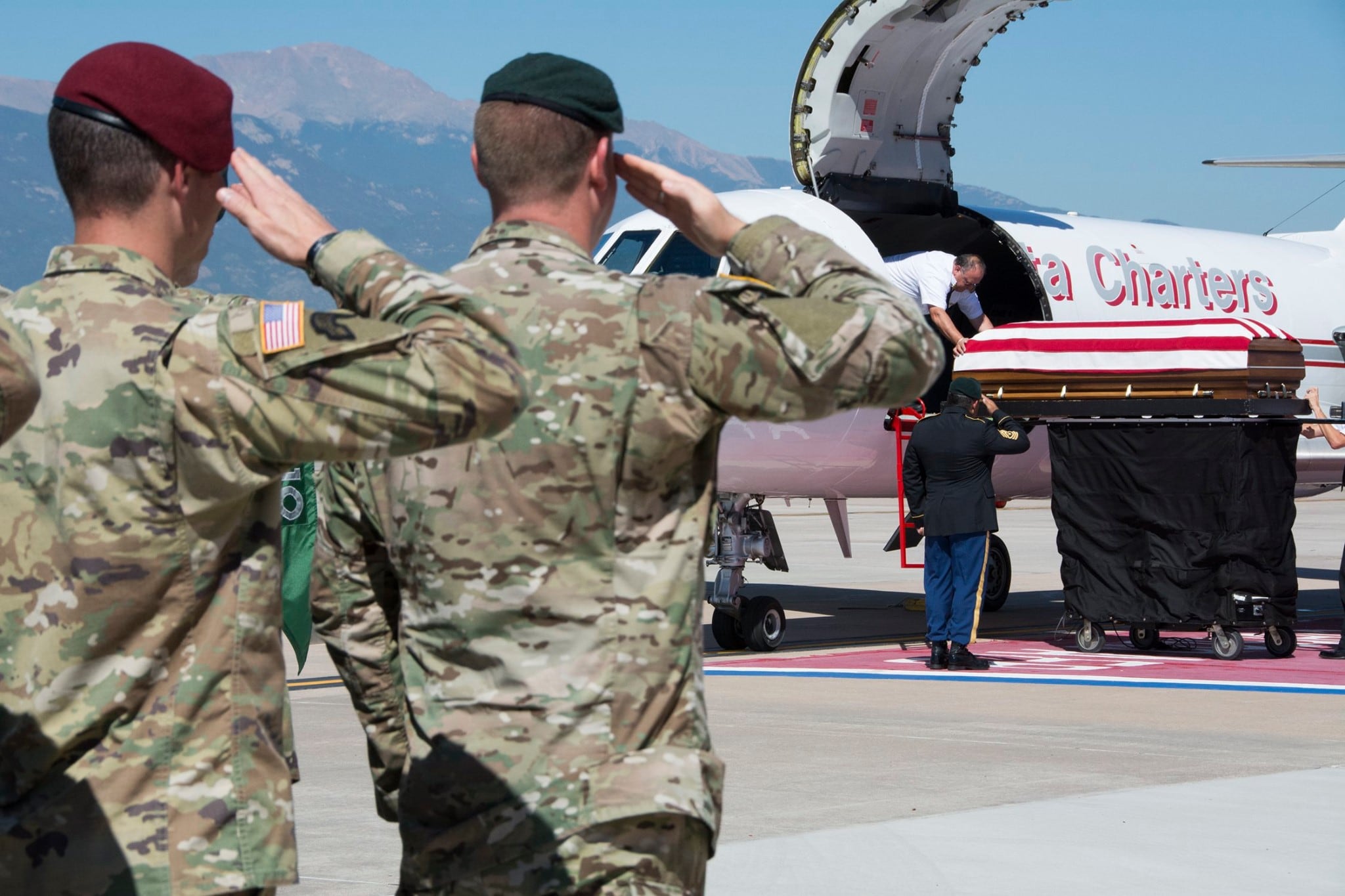After a meeting with key leaders Feb. 8 at military headquarters in the Sherzad district of Nangarhar province, members of 3rd Battalion, 7th Special Forces Group were ready to leave, but helicopters supposed to ferry them out were delayed, according to a military source.
As the troops waited, they were hit by M-249 light machine gun fire.
“One individual dressed in an Afghan Army uniform opened fire on the combined U.S. and Afghan force” with a M-249, said a USFOR-A official Saturday morning.
The machine gun fire killed Sgt. 1st Class Antonio R. Rodriguez, 28, of Las Cruces, New Mexico and Sgt. 1st Class Javier J. Gutierrez, 28, of San Antonio, Texas. The machine gun fire also killed an ANA soldier and wounded six other U.S. troops and three other ANA.
While the description of the incident differs from what a source previously told Military Times about there being two Afghan National Police responsible for the killings, the apparent insider shooting shows the challenges facing Afghans and U.S. forces.
In general, insider attacks against U.S. troops have decreased over the past few years, but the same kind of attacks targeting Afghan forces have actually spiked.
In the second half of 2019, there were 57 insider attacks against Afghan forces, which was an increase from the first half of the year and also an increase from the same time period in 2018, according to a series of congressional reports dating back five years.
U.S. Forces-Afghanistan only reported one insider attack against Americans in their two congressional reports for 2019, though there were four the year prior. This latest attack against 7th Group soldiers is the first one reported in 2020.
Insider attacks have long been a staple of war in Afghanistan, but these incidents have decreased alongside the gradual draw-down of American personnel in the country.
RELATED

A large number of U.S. troops departed Afghanistan at the end of 2014. There were about 34,000 troops in the country at the height of the year, versus the roughly 15,000 beginning in 2015. But the number of insider attacks recorded by U.S. Forces-Afghanistan only went from seven in 2014 to five in 2015.
Attacks decreased to just two incidents in 2016, but spiked once more to six in 2017.
One such incident occurred in Nangarhar Province’s Pekha Valley on June 11, 2017. An Afghan commando opened fire on friendly forces helping fight Afghanistan’s Islamic State franchise. While the Taliban claimed the commando was one of their infiltrators, Afghan officials told the New York Times it appeared to have been the outcome of a personal dispute.
While some attacks are indeed the result of Taliban coercion to compel members of the Afghan security forces to turn their guns on Americans, other incidents like the Pekha Valley attack, and even the most recent one against 7th Group soldiers, are sometimes reported as the outcome of personal disputes.
Days after the Pekha Valley shooting, on June 17, 2017, seven U.S. soldiers were wounded by another Afghan commando in the northern city of Mazar-i-Sharif. The attack took place in the Afghan National Army 209th Corps headquarters at Camp Shaheen. Two attacks within days of one another by members of one of Afghanistan’s most elite, and best vetted, fighting forces highlight the difficulty in stemming such incidents.
In 2018, the total number of attacks dropped to just four. But their targets were notable.
Command Sgt. Maj. Timothy Bolyard — one of the top enlisted soldiers on the Army’s inaugural deployment of its 1st Security Force Assistance Brigade — was killed Sept. 3, 2018, by a member of the Afghan National Police while on an advising mission in Logar Province.
Then in October of that year, the four-star U.S. general who leads the NATO mission to Afghanistan narrowly avoided an insider attack that killed an Afghan general and wounded two other Americans during a meeting in Kandahar. Less than a month later, an Army National Guard major and intelligence officer, who also served as the mayor of North Ogden, Utah, was killed in an attack at Kabul.
U.S. Forces-Afghanistan has said in congressional reports that it has worked to steadily decrease insider attacks. Improvements included the increased use of enhanced screening techniques for existing Afghan security forces as well as new recruits coming into formations. The U.S. military also established a liaison position to guide Afghan counterparts in screening for threats from the inside.
In September 2017, the Afghan Ministry of Defense signed a new “Force Protection and Insider Threat Policy” that U.S. officials said improved training and security procedures among Afghans and coalition service members. The Afghan Ministry of Interior Affairs, which oversees police and counter-narcotics units, was developing a similar policy, according to the report.
The new vetting procedure helped muster out several hundred potential security threats. More than 230 Afghan troops were removed from the security forces in the first half of 2018, and another 199 were removed in the second half of that year.
Like many metrics from the war in Afghanistan, it’s difficult for observers to determine whether the numbers are indeed from a more stringent process or are simply manufactured by Afghan officials to give the appearance of compliance.
Kyle Rempfer was an editor and reporter who has covered combat operations, criminal cases, foreign military assistance and training accidents. Before entering journalism, Kyle served in U.S. Air Force Special Tactics and deployed in 2014 to Paktika Province, Afghanistan, and Baghdad, Iraq.
Howard Altman is an award-winning editor and reporter who was previously the military reporter for the Tampa Bay Times and before that the Tampa Tribune, where he covered USCENTCOM, USSOCOM and SOF writ large among many other topics.





